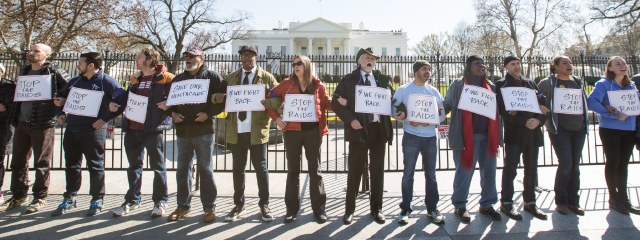Our Homes, Our Future: How Rent Control Can Build Stable, Healthy Communities
Leveraging this powerful yet underutilized tool would have tremendous payoff: if the rent control and tenant protection policies being debated right now in states and localities become reality, 12.7 million renter households will be stabilized. If adopted by states nationwide, 42 million households could be stabilized.
Rent control protects tenants from excessive rent increases by creating a schedule for reasonable and gradual rent increases, while ensuring that landlords receive a fair return on their investment. It is a smart, proven policy that can immediately stabilize prices, halt rent gouging, and reduce the risk of displacement and homelessness, while increasing housing security and affordability over the long term. Why should policymakers and community leaders act now to implement rent control?
- Rent control works—it increases housing stability and affordability for current tenants. Tenants living in rent-controlled units move less frequently, are less likely to experience destabilizing forced moves, and pay substantially less than tenants in non-regulated units of similar size and quality.
- Rent control is unrivaled in speed and scale. Rent control is the only policy tool that can immediately provide relief to renters facing unaffordable rent increases. Because rent control covers private rental housing where the vast majority of renters live, it outperforms all other affordable housing tools in terms of scale of impact. In cities with rent control, it is often the largest source of affordable housing.
- Rent control is cost-effective. While rent control requires a government apparatus to implement, the costs for operating rent control programs can be covered by modest fees and can even be cost-neutral.
- Rent control protects low-income households. Like all consumer protections, rent control applies to renters of all incomes. But rent control disproportionately benefits low-income tenants, seniors, people of color, women-headed households, persons living with disability and chronic illness, families with children, and others who have the least choice in the rental market and are most susceptible to rent gouging, harassment, eviction, and displacement.
The stability and affordability provided by rent control would have cascading benefits for communities and our broader society. Renters would be more financially secure, with more disposable income to spend on other household needs and in the local economy. They would be healthier, since housing stability and affordability contribute to mental and physical health. Children would do better in school, since frequent moves disrupt education. And our democracy would be fortified, since stability increases civic and political participation.
While no one policy can solve the renter crisis, rent control offers meaningful, immediate, and widespread relief for tenants facing unsustainable—and sometimes unconscionable—rent increases. This is why it is a cornerstone of the housing justice and tenant rights movement and an essential element of a comprehensive approach to address our affordability challenge.
Policymakers and community leaders should take swift action to bring rent control to many more tenants and communities by strengthening rent control in the states where it exists, establishing rent control in more states, and supporting tenant organizing in every community. With renting up nationwide, action is all the more urgent. Renters need stability to thrive, and when renters thrive, communities thrive.













